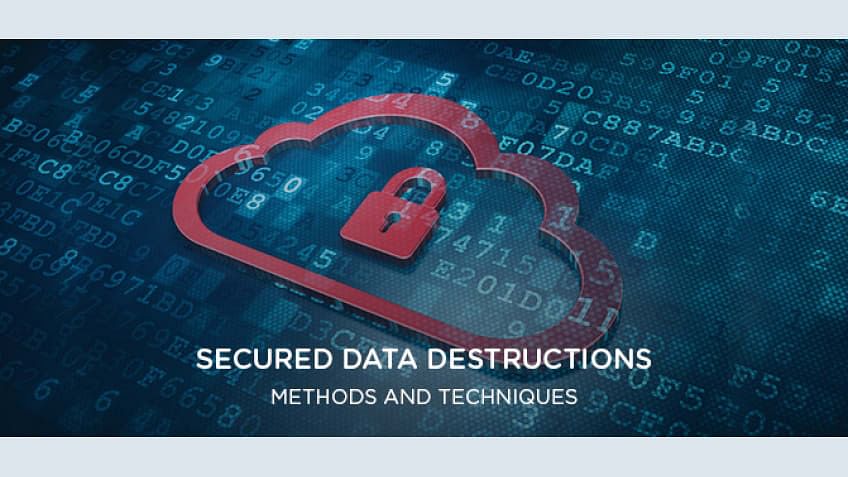Leading Tips for Ensuring Secure Data Destruction in Your Cyber Security Strategy
Leading Tips for Ensuring Secure Data Destruction in Your Cyber Security Strategy
Blog Article
The Value of Effective Data Damage Practices in Shielding Sensitive Info and Ensuring Computer Security
In an age where data violations are increasingly typical, the significance of reliable data damage techniques can not be overstated. Organizations face significant threats when sensitive details is inadequately thrown away, potentially bring about unauthorized access and serious economic repercussions. Carrying out robust information destruction techniques not only reduces these risks but also straightens with legal compliance requirements, making sure that companies copyright their online reputation and foster customer trust fund. The inquiry stays: what specific approaches can be employed to boost these techniques, and how can organizations properly integrate them into their general cybersecurity structure?
Comprehending Information Devastation
Recognizing data damage is important in today's electronic landscape, where sensitive info can quickly be endangered. Efficient data destruction entails not merely ensuring but removing documents that data is irretrievable via comprehensive methods. This procedure is vital for companies that manage private customer info, copyright, or inner files, as any type of violation can lead to severe financial and reputational effects.
Information devastation includes numerous methods, including shredding physical media, degaussing magnetic storage devices, and using software-based options that overwrite information numerous times. Each method offers a certain objective and should straighten with the level of sensitivity of the information being disposed of. Physical destruction is typically preferred for difficult drives consisting of very confidential information, while software program methods could suffice for much less sensitive information.
Moreover, sticking to sector criteria and policies, such as the General Information Defense Guideline (GDPR) or the Wellness Insurance Coverage Mobility and Responsibility Act (HIPAA), is imperative for conformity and to minimize legal risks. Organizations needs to develop a robust information destruction policy, train staff members on finest techniques, and on a regular basis investigate their treatments to make sure that all delicate info is taken care of firmly and effectively.
Threats of Inadequate Practices
Poor information devastation techniques subject companies to substantial risks that can have significant consequences. When delicate info is not appropriately dealt with, it stays vulnerable to unapproved gain access to, which can lead to data violations and identity theft. Such cases not only jeopardize the protection of individuals however likewise stain the organization's reputation, causing a loss of customer depend on and possible financial repercussions.
Additionally, governing conformity is progressively strict in many markets. Failure to comply with information destruction guidelines can cause large fines and legal activities versus organizations. These fines can divert and strain economic resources focus from core company operations.
Furthermore, the abuse of residual data can lead to intellectual building theft or corporate espionage, endangering affordable advantages (data destruction). The influence of poor data destruction expands past prompt economic losses; it can likewise result in lasting damages to brand name honesty and market placement

Organizations must recognize that information protection is not entirely regarding protecting against violations; it likewise incorporates the accountable management of information throughout its lifecycle. Overlooking effective information devastation methods can have disastrous implications, underscoring the need for robust measures to minimize these risks.
Best Practices for Information Devastation
Carrying out effective data devastation methods is important for safeguarding delicate information and keeping conformity with regulative criteria. Organizations ought to take on a multi-faceted strategy to guarantee that information is irretrievable, thus protecting against unapproved accessibility and potential violations.
First, data should be classified based on level of sensitivity, enabling companies to apply suitable damage approaches customized to the degree of danger. For digital information, utilizing software-based data-wiping devices that follow industry criteria can successfully overwrite existing data. Physical devastation techniques, such as shredding or degaussing, are crucial for tools that keep sensitive information, making certain complete eradication.
Establishing a clear information retention policy is crucial, detailing how much time various types of details need to be maintained prior to devastation. Regular audits of data storage systems are additionally necessary to determine outdated or unneeded information needing elimination.
Moreover, training workers on the value of data destruction and the specific protocols to comply with fosters a society of protection within the company. Finally, maintaining documents of information devastation processes gives responsibility and sustains conformity with outside policies and interior policies. By sticking to these ideal practices, organizations can substantially mitigate the dangers connected with information exposure.
Legal and Conformity Considerations

Failing to conform with these laws can lead to serious penalties, including significant penalties and reputational damages. Organizations has to implement a durable information destruction plan that aligns with these legal frameworks and offers clear standards on the correct techniques of data disposal, whether physical shredding or digital wiping.
Additionally, preserving documentation of information destruction tasks is essential for showing conformity during audits or assessments. By focusing on lawful and conformity factors to consider, companies can boost their data safety position and foster trust fund with customers and stakeholders, eventually adding to an extra protected information administration setting.
Advantages of Effective Data Damage
Effective data devastation techniques extend beyond plain compliance; they use considerable benefits to companies that prioritize view them. By guaranteeing that delicate info is irretrievably ruined, companies reduce the threat of information violations and the possible financial repercussions linked with them. This proactive strategy not just safeguards versus unapproved accessibility however also enhances the total dependability of the company in the eyes of clients and stakeholders.
Implementing robust data destruction methods, such as physical damage of storage devices or innovative information cleaning techniques, adds to the strengthening of an organization's cybersecurity pose. data destruction. It reduces the likelihood of copyright burglary and secures exclusive details, therefore preserving an affordable edge out there

Verdict
In conclusion, effective information destruction practices are necessary for guarding delicate information and boosting overall computer system protection. Inevitably, a dedication to robust information devastation techniques promotes a society of obligation, thus strengthening an organization's cybersecurity pose and maintaining client trust fund.
Report this page